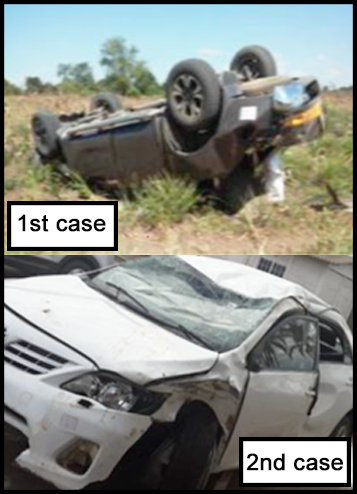-
What happened?
Many incidents have happened due to speeding.
Example 1: Commercial inspector was driving at 76 km/h (46 miles/hr) on a non-asphalted, degraded road where the speed limit was 60 km/h (37 miles/hr). He lost control of the vehicle, swerved off the road and rolled over.
Example 2: Worker was driving at 94 km/h (58 miles/hr) on a non-asphalted road with a speed limit 60 km/h (37 miles/hr). He lost control of the vehicle, crashed into a tree and rolled over.
Drivers and passengers were wearing seat belts and were not injured, but both vehicles were severely damaged.

-
Why did it happen?
Speeding on degraded, non-asphalted roads.
Drivers were not aware of the risks.
Inadequate on-board-computer (OBC) speed limit settings with relevant route types.
No driving performance follow-ups carried out by management.

-
What did they learn?
Respect traffic code and local speed regulations.
Set speed limits for light vehicles on on-board-computer (OBC). Ensure that systems are functional. Monitor OBC at least once a day.
Implement a journey management plan for each trip outside urban areas. Include a complete road risk analysis to identify speed limits and accident ‘black spots’.
Monitor violations (speeding, driving time, non-compliance with resting time, etc.), with appropriate consequences in case of non-compliance.

-
Ask yourself or your crew
Why do you think the drivers did not respect the speed limit?
Think of a time when you were involved in a similar situation. What happened? What could have happened?
What can we do to improve journey management plans?
What do you think the consequence of non-compliance should be?

Add to homescreen
Content name
Select existing category:
Content name
New collection
Edit collection
What happened?
Many incidents have happened due to speeding.
Example 1: Commercial inspector was driving at 76 km/h (46 miles/hr) on a non-asphalted, degraded road where the speed limit was 60 km/h (37 miles/hr). He lost control of the vehicle, swerved off the road and rolled over.
Example 2: Worker was driving at 94 km/h (58 miles/hr) on a non-asphalted road with a speed limit 60 km/h (37 miles/hr). He lost control of the vehicle, crashed into a tree and rolled over.
Drivers and passengers were wearing seat belts and were not injured, but both vehicles were severely damaged.

Why did it happen?
Speeding on degraded, non-asphalted roads.
Drivers were not aware of the risks.
Inadequate on-board-computer (OBC) speed limit settings with relevant route types.
No driving performance follow-ups carried out by management.
What did they learn?
Respect traffic code and local speed regulations.
Set speed limits for light vehicles on on-board-computer (OBC). Ensure that systems are functional. Monitor OBC at least once a day.
Implement a journey management plan for each trip outside urban areas. Include a complete road risk analysis to identify speed limits and accident ‘black spots’.
Monitor violations (speeding, driving time, non-compliance with resting time, etc.), with appropriate consequences in case of non-compliance.
Ask yourself or your crew
Why do you think the drivers did not respect the speed limit?
Think of a time when you were involved in a similar situation. What happened? What could have happened?
What can we do to improve journey management plans?
What do you think the consequence of non-compliance should be?
Two examples of significant over speeding on non-asphalted roads ended up in roll overs. Drivers and passengers were wearing seat belts and were not hurt, but both vehicles were severely damaged.











